
A Bustle & Sew Publication
Copyright © Bustle & Sew Limited 2024
The right of Helen Grimes to be identified as the author of this work has been asserted in accordance with the Copyright, Designs and Patents Act 1988.
All rights reserved. No part of this publication may be reproduced, stored in a retrieval system or transmitted in any form, or by any means, without the prior written permission of the author, nor be otherwise circulated in any form of binding or cover other than that in which it is published and without a similar condition being imposed on the subsequent purchaser.
Every effort has been made to ensure that all the information in this book is accurate. However, due to differing conditions, tools and individual skills, the publisher cannot be responsible for any injuries, losses and other damages that may result from the use of the information in this book.
First published 2024 by: Bustle & Sew Station House West Cranmore Shepton Mallet BA4 4QP
www.bustleandsew.com
2
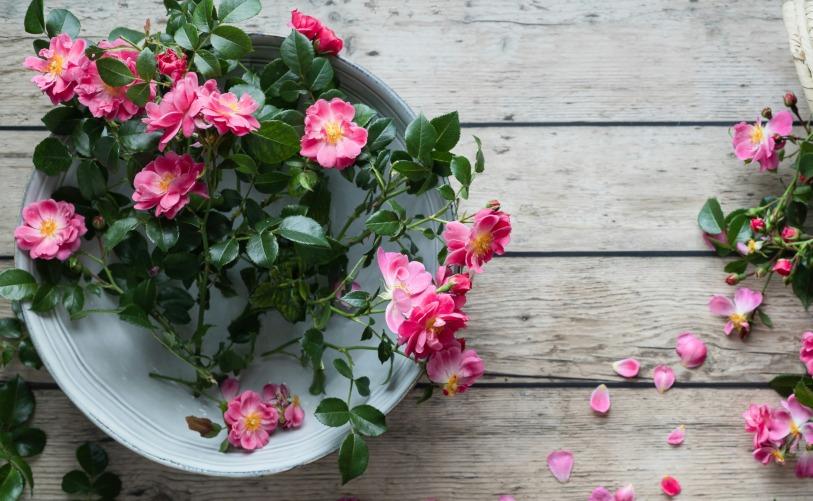


WelcometotheJuneMagazine
Hello everyone!
As the song goes… “summer time, and the living is easy….” I’m not sure that’s entirely true if you keep chickens as there is an ongoing tussle in our house about whose turn it is to get up at 4.30 am when the ladies realise that it’s light outside and and demand to be let out of their house to begin their daily routine. But in lots of other ways, yes summer is an easy time of year. The spring planting is done, and there are long afternoons stitching in the garden to be enjoyed. It’s much easier to dry my washing on the line and I don’t need to clean and light the woodburner at the beginning of the day.
This month’s patterns reflect the summer mood - we have roses and a Tuscan landscape - reminding me of Italian holidays in days gone past. I hope you’ll enjoy the embellished book covers - I am definitely going to stitch more of these - and there’s also a chance to try your hand at using your printer to add a little extra to your embroidery.
As well as all of this we take a look at social media Georgian style, look at some stash-busting tips and visit Grandma on laundry day.
I do hope you’ll enjoy this issue, and look out for the July Magazine published on Thursday 27 June.
Very best wishes
3
Helen
xx
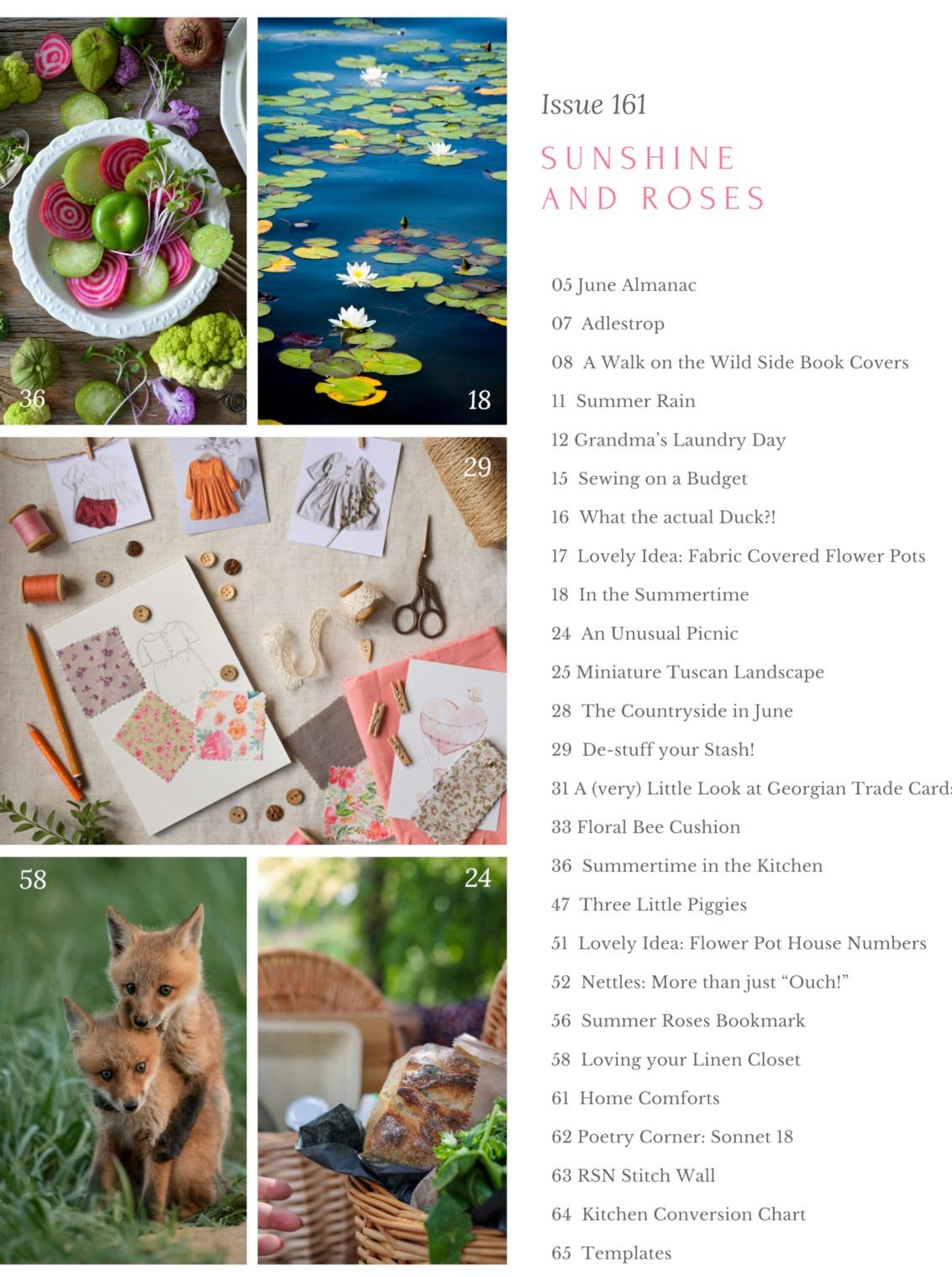
4
Across the countryside, hedgerows and roadside verges are full of the first foxglove flowers, wild honeysuckle, dog roses and bramble flowers, that later in the year will become succulent dark blackberries, perfect for crumbles and jams. Sweet peas begin to flower in June, and you must pick them often in order to stop them setting seed. A jar of sweet peas on the kitchen table is a sure sign that summer has arrived - in our house at least!
In June the days are at their longest and the nights are short so that, on bright sunny days it can be hard to settle to sleep. The fresh, sparkling dawns, full of the day’s promise and long twilight evenings are so wonderful after the short dark days of winter, that it’s hard to resist the temptation to sit up late, perhaps in the garden, stitching or reading until the dew begins to fall.
June
Today I find it hard to believe that women only won full suffrage on 2 July 1928, just a month before my own mother was born. And certainly attitudes towards women were very different back then, nearly a century ago.
“Wherethebeesucks, theresuckI: Inacowslip’sbellIlie; ThereIcouchwhenowls docry. Onthebat’sbackIdofly Aftersummermerrily. Merrily,merrilyshallI livenow
Undertheblossomthat hangsonthebough.”
It was on 6 June 1928 that Prime Minister Stanley Baldwin gave a speech at a banquet held at the Worshipful Company of Goldsmiths in London to celebrate the completion of the Oxford English Dictionary, describing it as “unrivalled in completeness and unapproachable in authority…” One hundred guests were invited, but these guests didn’t include any women at all, not even Rosfrith Murray who had worked on the dictionary for twenty years.
This year 6 June brings the eightieth anniversary of D-Day, when a ground force of more than 130,000 troops (supported by 24,000 air-borne troops) came ashore on five beaches across a 50-mile stretch of Normandy coast. By the end of D-Day there had been 10,000 allied casualties.
Yet this was only the beginning. The ensuing Battle of Normandy was to
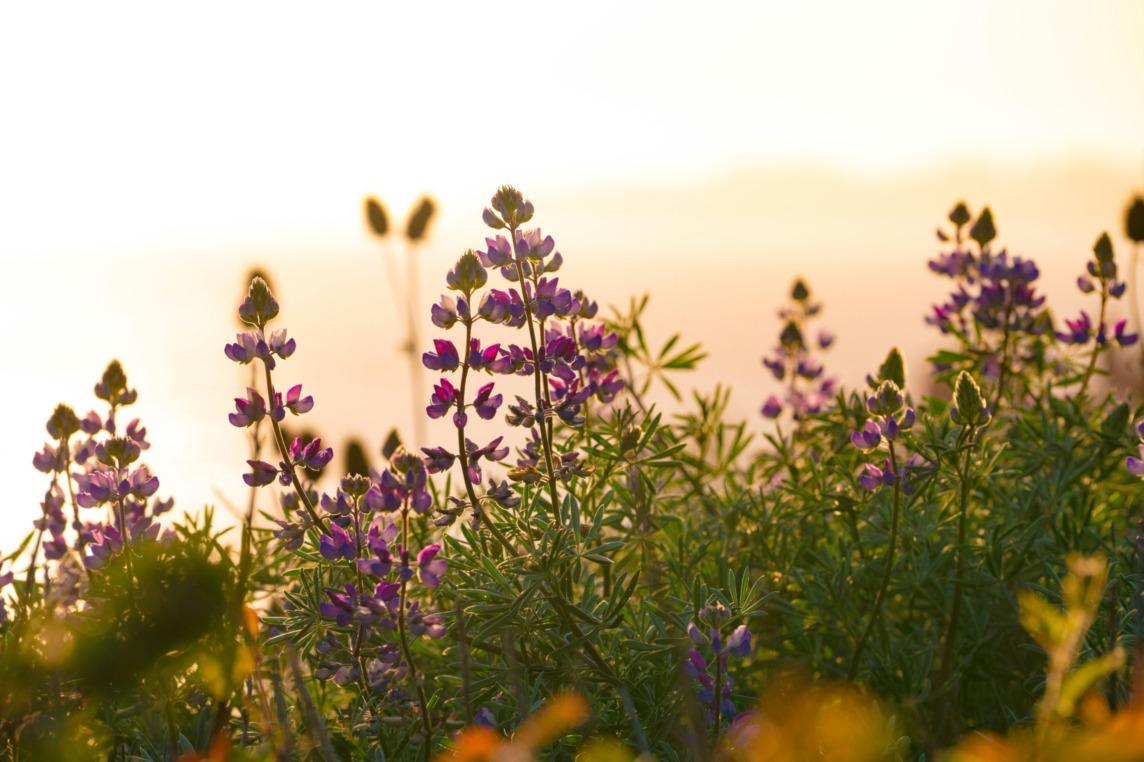
5

last into August and cost tens of thousands of lives as it defeated and repulsed the occupying Nazi forces eastwards. It was a decisive success for the Allies and paved the way for the liberation of much of north west Europe.
There was fighting too on June 8 more than a thousand years earlier when, in 793 according to the Anglo Saxon Chronicle entry for this year, Viking warriors plundered the monastery at Lindisfarne. Though much was destroyed, miraculously the illuminated early eighth century Lindisfarne Gospels survived undamaged. When the monks finally left Lindisfarne in around 875 they took the precious book with them.
Today, in more peaceful times, away from the city, across the countryside elder trees are coming into bloom, their profuse creamy- white flower heads unmissable. Both the flowers and the berries are good for making a variety of drinks such as wines and
cordials, whilst elderflower fritters make a delicious snack. Ideally pick elderflowers for edible purposes on a warm dry day and don’t take them from roadside trees as they will be polluted from by exhaust fumes.
“OmyLuve'slikeared,red roseThat'snewlysprungin June;
OmyLuve'slikethemelodie That'ssweetlyplay'dintune.”
Deep in the sunlit woodlands you’ll find foxgloves in flower, their tall spikes of purple blooms growing perhaps at the shady base of an old fallen tree and a few fields, perhaps those farmed organically or that haven’t been sprayed this year, will be red with poppies.
But more than all of these of course, June is the month traditionally associated with the rose, and is
known as “Rose Month”. Rose Month can be traced back to ancient civilizations, where roses held significant cultural and symbolic value. The month of June was chosen to honour these beautiful flowers at the peak of their blooming season when they can be seen in parks and gardens across the country in all their full glory.
The fruit is beginning to ripen on wild cherry trees around now and you’ll spot a variety of different birds including pigeons, blackbirds and thrushes feasting on it. Small green sloes will also be appearing on blackthorn - a promise of sloe gin later in the year if you’re so inclined - and the hedgerows are now at their most glorious, garlanded with creamy flowers of travellers’ joy twined through with pale pink dog roses and wild honeysuckle - sheer perfection!
6
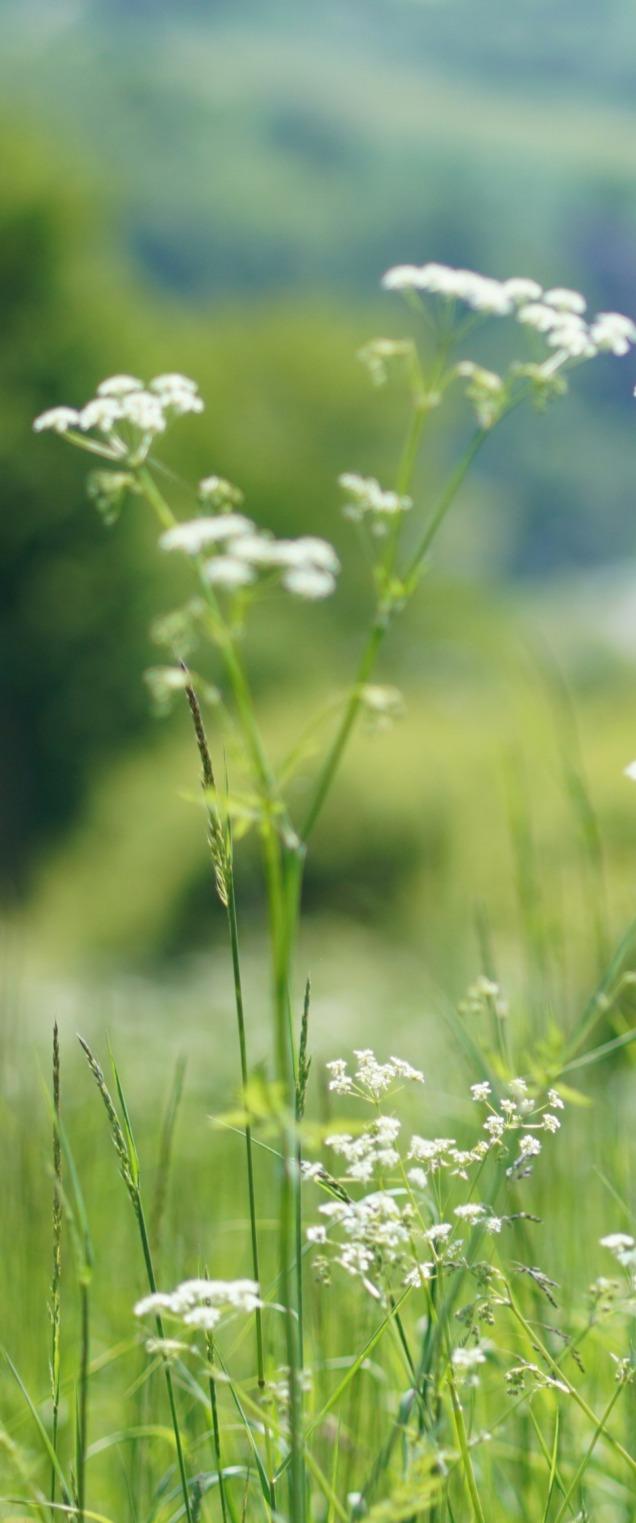
Adlestrop
Yes.IrememberAdlestrop— Thename,becauseoneafternoon Ofheattheexpress-traindrewupthere Unwontedly.ItwaslateJune.
Thesteamhissed.Someoneclearedhisthroat. Nooneleftandnoonecame Onthebareplatform.WhatIsaw WasAdlestrop—onlythename
Andwillows,willow-herb,andgrass, Andmeadowsweet,andhaycocksdry, Nowhitlessstillandlonelyfair Thanthehighcloudletsinthesky.
Andforthatminuteablackbirdsang Closeby,androundhim,mistier, Fartherandfarther,allthebirds OfOxfordshireandGloucestershire.
On 24 June, 1914, poet Edward Thomas’s Paddington to Malvern train stops at Adlestrop station on the Cotswold line in Gloucestershire.
He makes a record of it in his notebook which features in the poem of the same name he later writes (above) probably in January 2015 about this.
Edward Thomas was killed on 9 April 1917, in WW1 at the Battle of Arras, three weeks before his poem “Adlestrop” is printed in the New Statesman Magazine.
7

A(very)Little
LookatGrandma’s Laundry
8

SewingonaBudget-afewtips…
1. Knowyourstash. Ifyoualwaysknowwhatyouhave,you’reless likelytobuyduplicates,andyou’llfindcreativewaystouseupwhat youalreadyhave.
2. Ifyoucan,trytosetasidealittleextraforyourstitching. Maybe everynowandthenforgoamorninglatteandsavethecostfor stitchingsupplies.
3. Keepyoursewingmachineandothertoolsintiptopshapesoyou don’t(hopefully)findyourselfhavingtopayforexpensiverepairs. And(myownpersonalbugbear),don’tletanyoneuseyoursewing shearstocutpaper-nothingwillbluntthemfaster!
4. Don’tfallforpersuasivemarketingtips-onlypurchasewhatyou need. Trywaitingaweekorsotoseeiftheurgetobuypasses. If youdoseegenuinebargainsthough,whichyouknowyou’regoing touse,thendosnapthemupasthey’llsaveyoumoneyinthelong run.
5. Ifyou’repurchasingonlinethenbundleyourshipping-trytobuy mostorevenallofyoursuppliesfromthesamestore. Freeshipping looksattractive-butdocomparewithotherstores,asitisn’treally free,simplywrappedupintheproductprices.
6. Don’ttrytosavemoneybypurchasingcheapfloss. Itreallyisn’t worthitinthelongrunasitwilltangle,frayandwon’tbeniceto workwith. Thisisoneareait’sdefinitelyworthspendingyour moneyon.
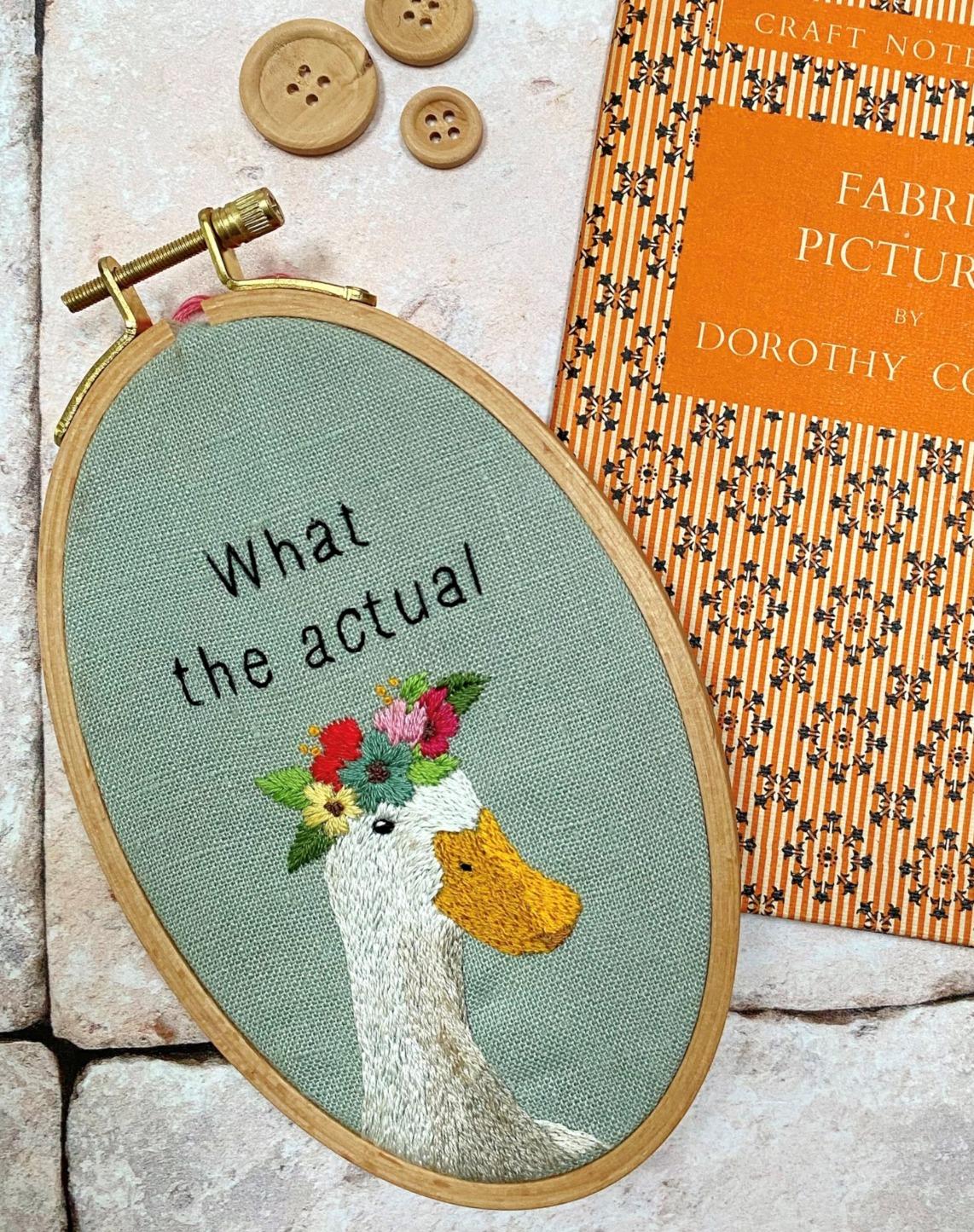
10
IntheSummertime

Fromthepinewoodinthelong,stillafternooncomesthe soft“coo,Coo!”ofthewoodpigeon. Uponthesun-baked heathlinnetsflutterfrombushtobush,waitinguntil,hadI apinchofsalt,Icouldputituponthetailsofthem,then flyingofftothenextoneandwaitingagain.
Thesmallbluebutterflyhasmadeitsappearancetoo, floatinginlittleflocksabovetheheather,ordroppingdown andthreadingthemselves,sixoreightatatime,in silhouetteuponadroopingbent,untiltheylooklikesome newandstrangeflowerunknowntobotany.
Ofhumanlifeupontheheaththereisscarcelyany. Iwalk therefordaystogetherandmeetnobody:butIdonotthink Peverelwasalwayssosparselypopulated. Tothe discerningeyetherearemanytracesoftheoccupationof man,fromthearrowheadsoftheStoneAgetothehalffilledtrenchesofKitchener’sArmy.
Therearepathsandcarttrackstoo,withoutnumber;some ofthemstillinoccasionaluse,butmostofthemovergrown anddeserted. Somehavebeensolongdisusedthatpine treeshavesprungandcometofullstaturebetweenthestill clearly-definedcartruts.
SometimesIfollowthesedesertedpaths,windinginandout toskirtthehillsandthemarshes,justastheywerefirst troddenbythenakedfeetofprimitiveman. Sometimes theyendinthetawny,bramble-growncliff-faceofa desertedgravelorsandpit. Thisisahappyhuntingground fortheloverofwildlife.
Floral Thompson: extracts from The Peverell Papers
Atone’sapproachrabbitsscatter;justa glimpseofawhitetail,andthatisallof them. Lizardsdartbehindsandheaps; sometimesahenpheasantwhirrsupand takeswing,leavingherdozenormore lightbrowneggstotheirfate. Butat oneIcameuponyesterdaytherewere nosuchsightsorsoundsofsudden flight.
Thereasonwassoonapparent. Roundingthecliffsuddenly,without sound,Icameuponahappyfamily party. Baskingfulllengthinthesunlay amotherfox,herwarmreddishbrown coatashadeortwodarkeranddeeper thanthesandhillbehindher. Around andaboveher,inplayfulpursuit, tuggingherearsandbrush,and rompingoverherjustasthoughshehad beenafeatherbed,sportedhertwo bright-eyed,prick-earedlittlecubs. Thefatherofthefamilysat uponhis haunchessomeyardsapart;such childishgameswereapparentlynotfor him. Hisbackwastowardsme,butI didnotthinkitadvisabletoreprovehim forhislackofmanners. Instead,I turneddiscreetly,andretreatedas silentlyasIhadcome.
Nearerhome,fatyoungthrushes scratchbeneaththeshrubsandgurgle theirsatisfactionwithwhatistobe foundthere. Eventhenewly-fledged housesparrowskeepupacontinuous “tweet!tweet!”andastotheyoung starlings,theyareasnoisyastheir elders,andthatissayingagooddeal!…..
Itisdarksolateandlightsoearlythat allthroughthenightthereisaglowin thesky;andinthescentedhalf-dark, whencoolnightwindsareabroad,and whiteflowersglimmerquitevisibly fromanupperwindow,itseemsawaste ofopportunitytogotobedatall.….
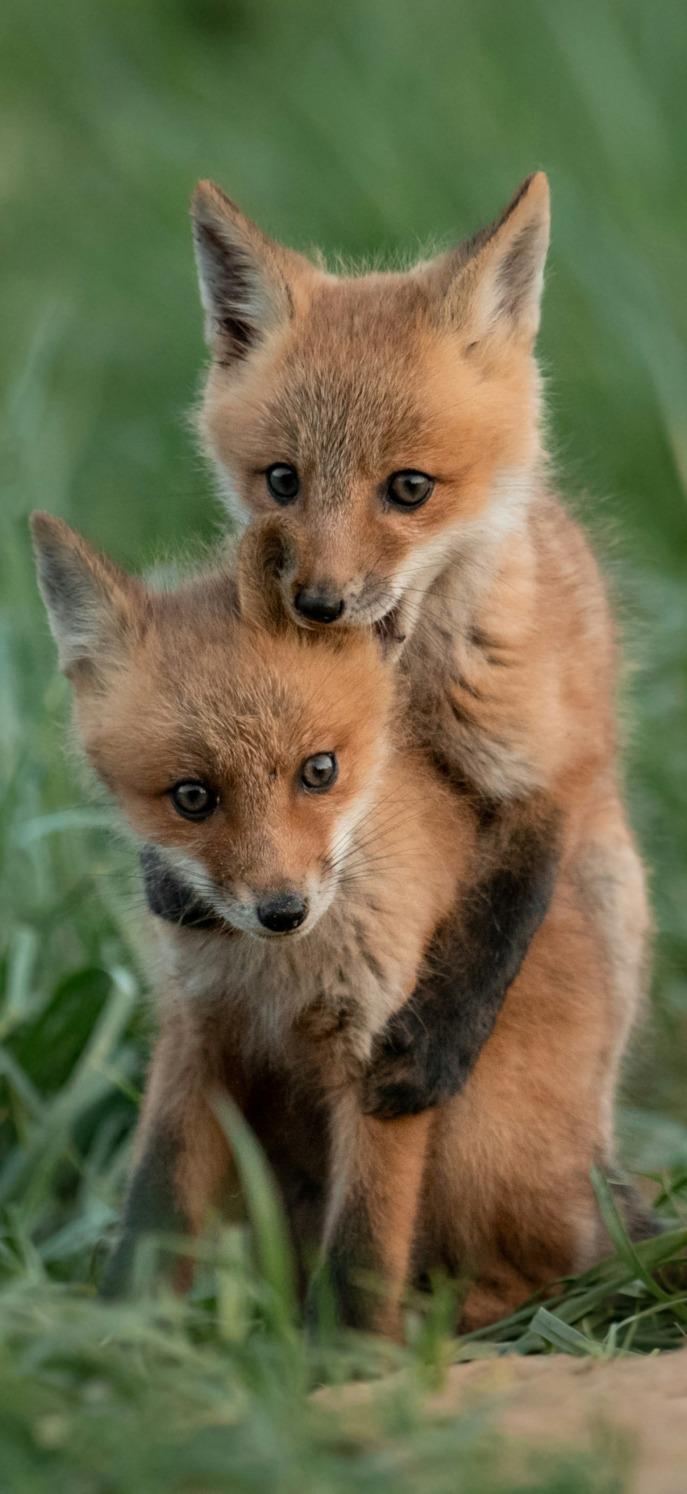

13
TheCountrysideinJune
June-themonthofthepeony,thelily,andthe transcendentrose;themonthofthetall,tuftedgrasses ripplinginthelightwinds,ofthehemlockopeningits creamyparasolsbesidetheroad. Juneofthemounting sunandlengtheningdays,ofthelongeveningsfilled withthescreamoftheswifts;ofdazzlingafternoons whenthecattlestandhock-deepintheshadedpond andthemurmurofthefliesgrowslouderdaybyday, andtheyoungthrushinthecleanbrownspotsofhis firstplumagehopsonthelawn;wherevertheeye movesitseemstomeettheflurried,uncertain, stumblingflightoffledglingsnewfromthenest. The summerhasascendedtoastateofcertainty;thefruitis setupontheappletree,thepearsarefirmagainstthe warmsouthwall;whileundertheirlowernetsthe gleamingstrawberriesarelusciousintheirprime.
June-themonthoftheshortnightswheretheowls call,thenightjarspinshisuncannyharmonyonthe
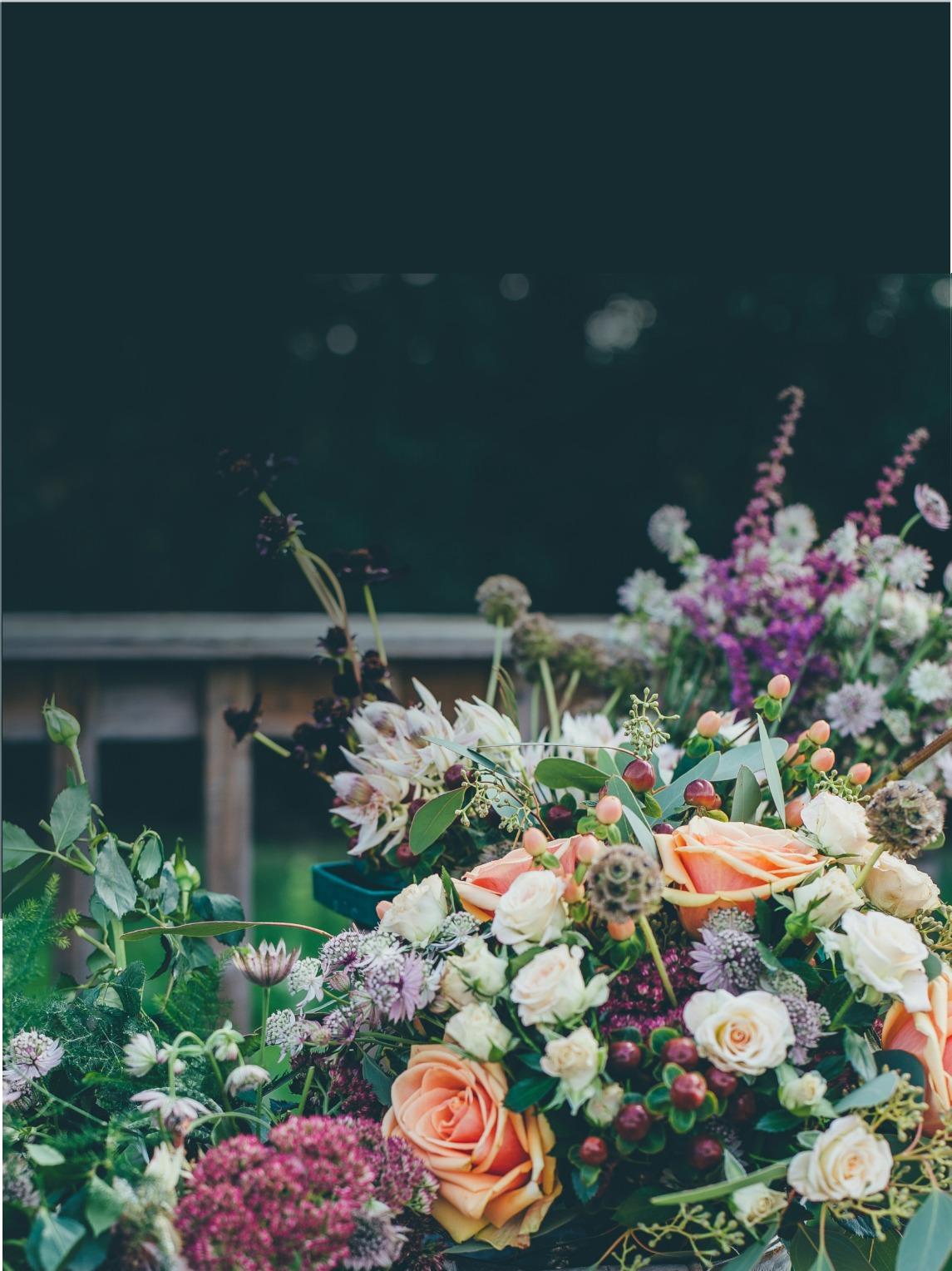
longfirbough,andthehedgehogsnufflesthrough thedarknessaftersnails. SweetJune,indeed,with herscentthescentofmignonetteandofhay-time, hergarmenttheheavycloakofmidsummergreen, embroideredalmostbeyondthebelievingwiththe exuberanceoftherose,thestitchworkofthe borderflowers.
Anxietyaboutthehay-that’salwaysthereinJune whenthecuttingedgeispoisedbetweenthedrying ofthemorningdewandthemenaceofthe thunder-clouds,navy-blueabovethehorizon. Butsomehoworotherthehayisalwaysmown, whetheritbeaarich,dry,delight,orscarcely worththetroubleofmowingit.
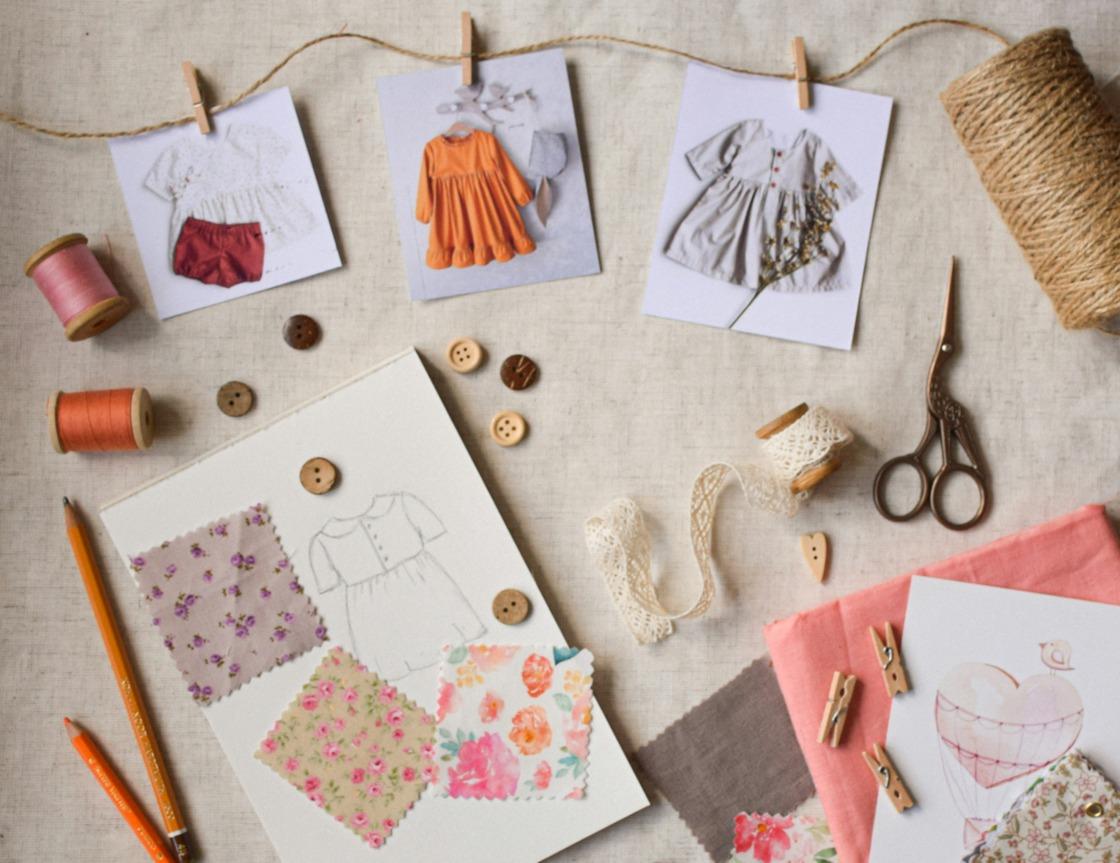
De-stuffyourStash!
Tipsonusingthefabricyoubuy-andbuyingonlyfabricyou’lluse!
It’s so easy to bring home fabric that you’ve simply fallen in love with - whether it’s the colours, the print or the provenance (who doesn’t love a wonderfully soft, organically dyed pure linen to stitch on?) But will you actually use your new purchase or is it destined to sit in your cupboard, maybe taken out from time to time and admired, but never actually used? I still have fabrics I purchased two decades ago, have never used but, because I love them so much, have never been able to let them go. If this is you, then here are a few suggestions you may find helpful….
● Buy prints with caution. Do their colours work with other fabrics in your stash? Is the scale of the print suitable for the project you have in mind - and if you’re being very strict with yourself, you should always have a project in mind when you’re purchasing fabric. If you can’t think of anything to do
with your potential purchase then it may well be destined to sit in your stash for quite some time.
● Don’t succumb to nostalgia. I have been guilty of purchasing vintage prints - especially Laura Ashleywhich remind me of my younger days. (Remember those puffed sleeves and flouncy skirts of the late seventies anyone?) And though I love them, they are still sitting on my shelf waiting for me to find a suitable project for them.
● If you have purchased fabric for a particular purpose, then make a record of your thoughts. This could be some screen shots from Instagram or Pinterest of similar designs that inspired you perhaps? Even pages torn from a magazine or simple jotted notes that will jog your memory when you see them again.
15
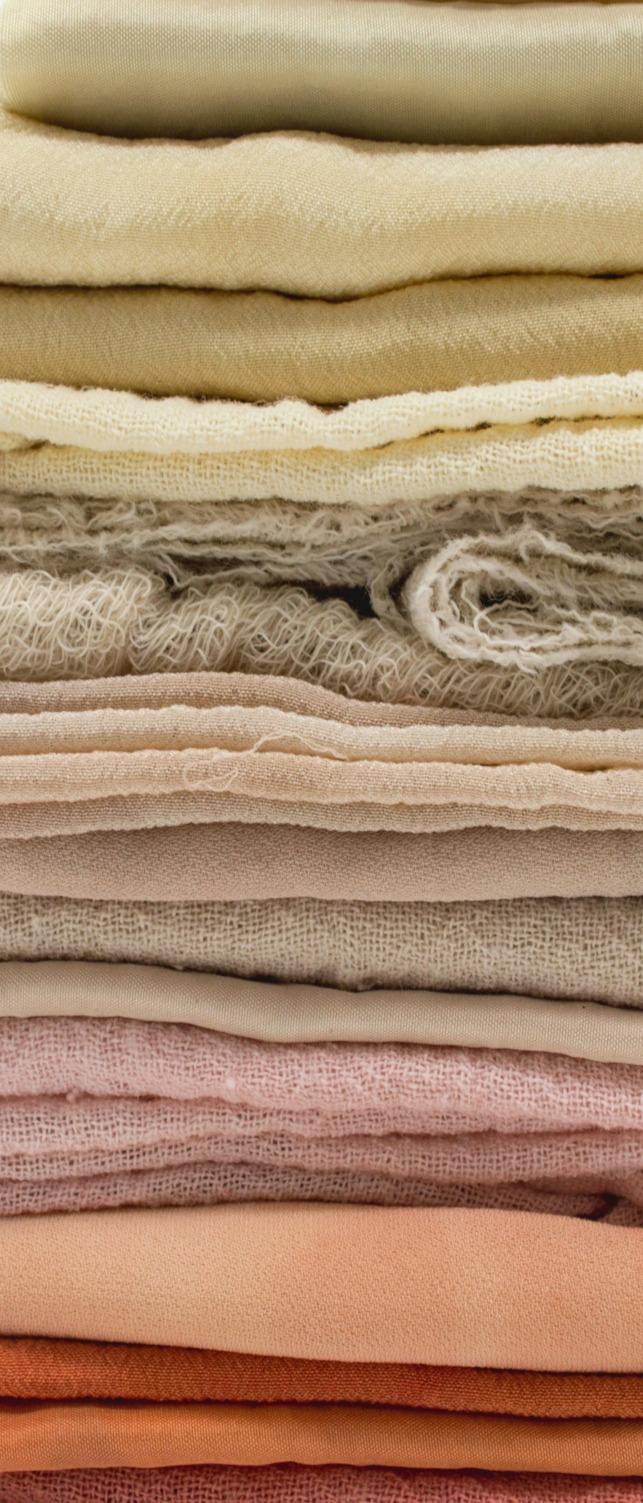
● And - final tip for buying wisely - give some thought to planning your stitching rather than making random purchases. Think about the season ahead - will you need Christmas fabrics for seasonal makes, or is the season in question Easter when lots of bunnies and pastel shades are the order of the day?
But if you’re like me and already have far too much fabric (question for self - can you ever actually have too much fabric?), you’ll need to think of some ways to use it up so you can purchase more!
● Consider challenging yourself to maybe using some stash fabric - even if only a little - in all future projects. Or if this seems too much then why not try to use stash fabric for every other project? Must be worth a try!
● Return to the screen - for example, Google Images or Pinterest can help you find images that look like the fabric from your stash, and then you can visualize what they will look like when made up. This might provide extra inspiration and kickstart your sewing.
● Organize your stash by fabric type and weight rather than colour. If you organize your fabric by type and weight, you can go to the section you need for your project and find all of your options in the same place.
● Create a special space for smaller pieces of fabric and off-cuts - not big enough to make a whole project on their own, but perhaps might add a splash of colour to a design or could be incorporated into applique work perhaps?
● And finally, if you need a little help to motivate you into using your stash then consider joining a thrifty challenge. There are shop-your-stash challenges you can join on Instagram, and if you can’t find one, make up your own!
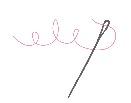

Summertimeand thecookingis easy….
17
June is the first month of summer - and is when we really begin to reap the rewards of all our hard work in the kitchen garden. But whether you grow your own, or purchase your salads, berries and vegetables, there is plenty of wonderful fresh seasonal produce available to enjoy.
Salad crops can now be picked and lovely new potatoes dug, both making ideal accompaniments to some delicious light early-summer dishes. There are the early soft fruits to enjoy too. Gooseberries begin the season, and there are strawberries and raspberries too, just begging to be made into summer tarts, smoothies, ice creams and jams. I remember as a child being taken strawberry picking in one of the first PYO farms and, for every berry that made it into my basket, at least two found their way into my mouth!
The barbecue season has begun, while picnics in the park, long country walks, outdoor music events and lazy days on the beach now begin to appear on the calendar. But, as the old saying goes, “don’t count your chickens before they are hatched,” or in this case, don’t rely upon warm sunny weather. Take your umbrella and warm jumper “just in case” even if the sun is shining when you set out, as the June weather can often turn wet or chilly before the day is over. But perhaps there should be another saying something along the lines of “what’s bad for the garden party is good for the vegetable patch” as if we do get a lot of rain and warmth at this time of
year it will make for a bumper fruit-filled harvest when September and October come around.
But, returning to my childhood PYO (pick your own) experiences - I must have been taken to one of the earliest farms as the first PYO strawberry farm wasn’t established until the 1960’s. PYO farms were popular until the eighties, but then took a dramatic nosedive thanks to the year round imported fruit and vegetables offered by the large supermarkets. Today, as we have become much more conscious of both the environmental and health benefits of eating local seasonal food, pick your own is making a bit of a comeback. And it’s not just strawberries on offer, today the largest farms will have several hundred acres offering all kinds of crops from asparagus and rhubarb in April and early May through to the autumn with plums, pumpkins and squashes.
June also brings a bonus for seafood fans as, along with more exotic specimens such as squid and spider crab, mackerel arrive on our shore this month, some of which will find their way onto the fishmonger’s slab. Mackerel are a beautiful fish, full of rich, distinct flavours that are present in our waters all year round, but come close inshore in the summer months when the water temperature increases. At this time they can easily be caught from small inshore boats or even from the beach - a feast of fresh caught mackerel cooked on the beach where they were landed makes the perfect end to a summer’s day.
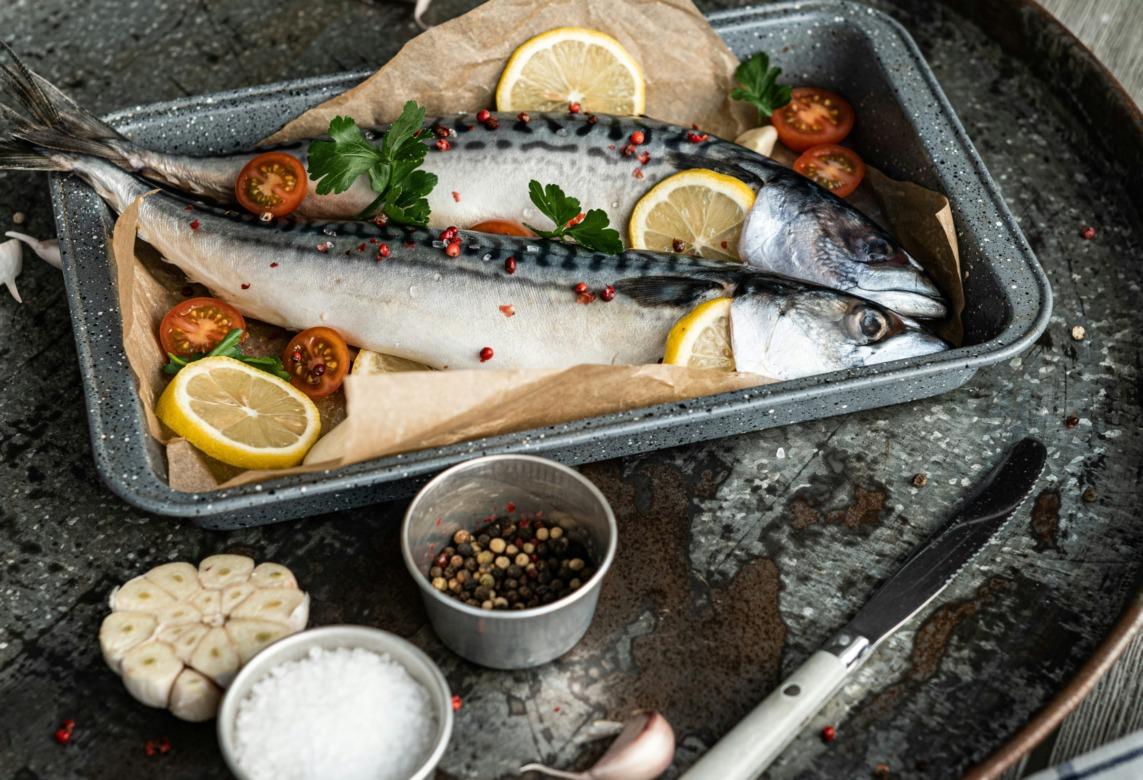
Lusciousandsweet,strawberriesaretheessenceofsummer…

These days it’s possible to eat strawberries all year round - though there’s nothing like the taste of those sweet early English berries, especially when they’re slightly warm, nibbled straight from the strawberry patch
…
But imagine how it used to be, not so very long ago, when strawberries were only available for a brief sweet season early in the summer, the first real soft fruit of the year. They were often cosseted and covered with cloches to bring the fruit to ripeness as early as could possibly be.
In the eighteenth and nineteenth centuries the list of strawberry varieties was vast - not just the rather woolly and tasteless Elsanta so widely available in supermarkets today. Strawberries are delicate and do not handle or keep well so modern varieties have been developed for maximum shelf life, at the expense of flavour. In 1829, in his publication “English Gardener” William Cobbett lists amongst others: Kew Pine, Chili, White Alpine, Red Alpine, Keen’s Seedling and Hautbois.
Good strawberry jam is difficult to make successfully as it needs fresh ripe fruit that has had plenty of sun. A cold, damp growing season produces berries that are bloated and tasteless, containing very little pectin.
Strawberries are naturally low in the essential pectin needed to make jam set so they are often over-cooked and lose their fresh flavour. It’s worth persevering though, and adding additional pectin when needed, as a good strawberry jam is still the classic preserve to eat at afternoon tea, in airy Victoria sponge cakes or spread on scones with whipped or clotted cream. There are many old-fashioned recipes for making a preserve where the fruit is kept whole, the aim being to produce a clear scarlet jam with the whole strawberries suspended throughout.
If you have a garden - even the smallest outdoor growing space will do - try growing a few red or yellow alpine strawberry plants. Their flavour is wonderfully sweet and intense and for some reason are rarely stolen by birds - so are much more rewarding to grow than the larger varieties. From sewing seeds early in the year, you can be harvesting your berries that summer. Alpine strawberries make a delicious jam if you can grow enough to make it worthwhile, but otherwise they are lovely picked daily as you need them and scatter whilst still very fresh over your cereals, yoghurts and puddings.
You should eat all varieties of strawberry as soon as possible after picking and never put them into water which will turn them soggy and tasteless.
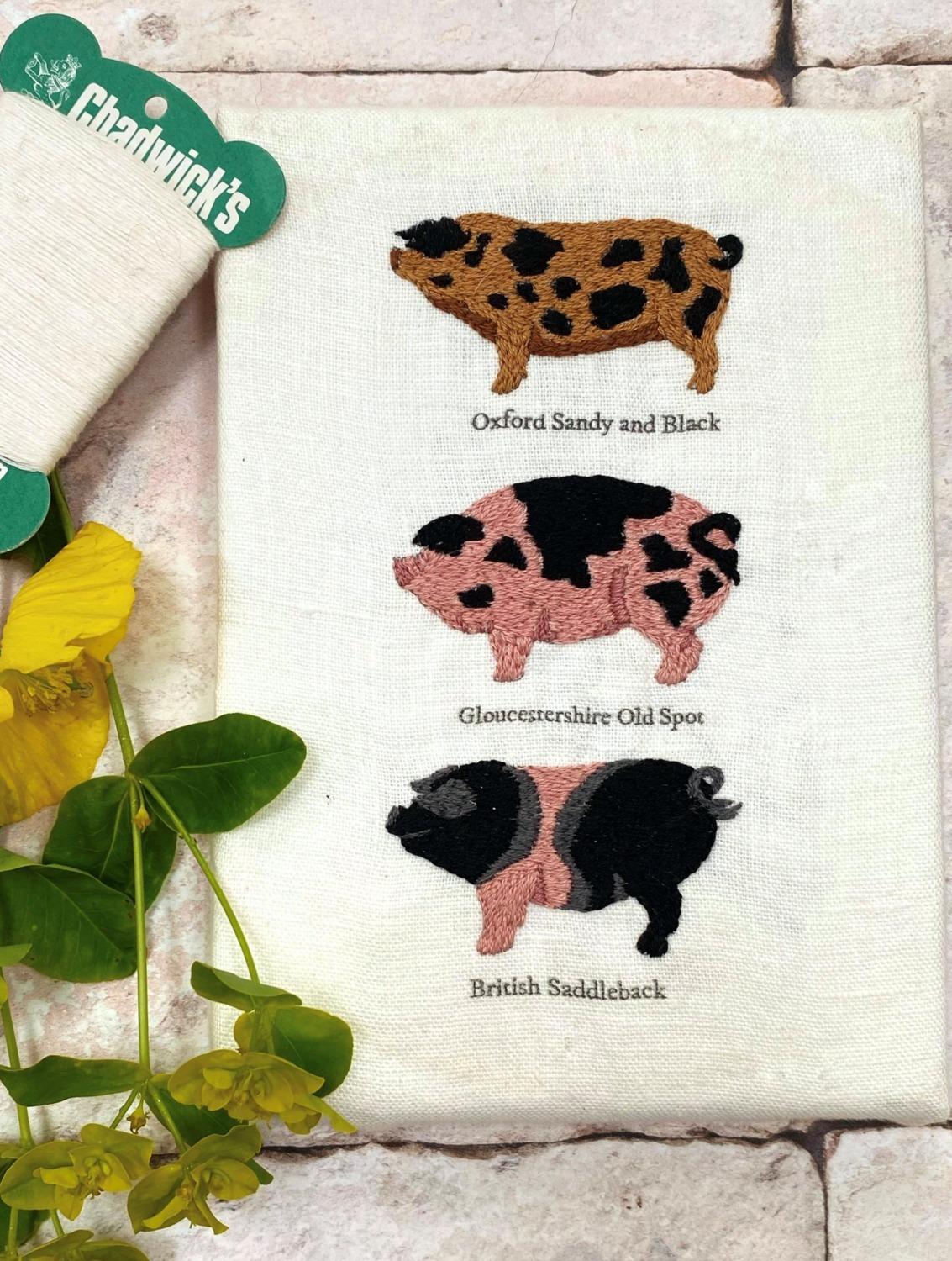
20
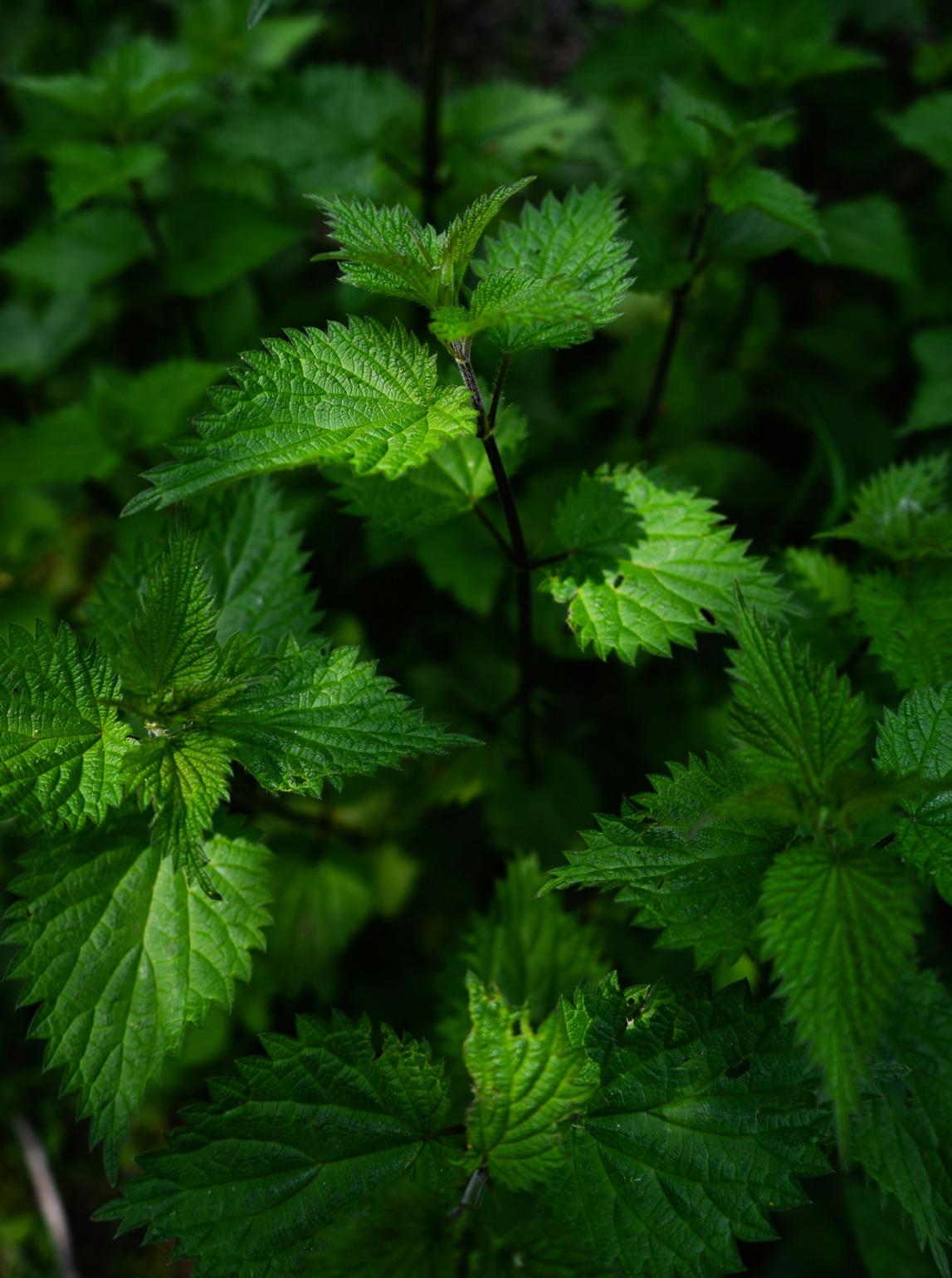
Nettles:muchmore thanjust“Ouch!”
21

Lovingyour LinenCloset
22
Peoplehavestoredtheirfabricsincupboardsandchestsforhundredsofyearstokeepthemfresh andclean,oftenaddingcedar,camphororotheraromaticsubstancestokeepmothsatbay. Now thewarmersummerdayshavearrived,it’sagreattimetoairyourclothesandtidyupyourcloset.
Up until the Renaissance people kept their linens, blankets in large wooden chests as cupboards didn’t feature in homes, being found only in churches and used to store holy relics, their doors decorated with images of saints and other religious designs - many of which can still be seen on these older cupboards today.
Once cupboards had made their way into homes, life became easier for housewives who no longer had to bend over to rummage through the contents of chests to find what they were looking for - usually at the bottom I guess, probably not much different to today! But the new cupboards had shelves for organising their contents and provided much needed extra storage space. Many women lovingly decorated their cupboard shelves with lace or embroidered ribbons. The arrival of hanging rails in cupboards a little later was a great benefit as these enabled jackets, coats and dresses to be hung up side by side, increasing ventilation and reducing creasing. The earliest wardrobes had arrived!
Many other weird and wonderful ideas proliferated in houses around this time, including hangers with long wooden poles that enabled housewives to hang clothing just beneath the ceiling where it would have been protected from most vermin. The trend for hanging clothes in cupboards received a boost in the mid-nineteenth century when clothes hangers arrived.
Today we store all kinds of fabrics in our linen cupboards or closetsbed linen, towels, tablecloths, pyjamas and everyday clothing too. I’d like to say that my cupboard features stacks of sweet-smelling, neatly ironed items just waiting patiently for the day when I need them. Sadly however, l have to confess that at the bottom is a pile of crumpled, un-ironed clothingcertainly sweet-smelling after being washed, but in no way neat and tidy!
Old housekeeping books from the nineteenth century offer lots of advice and tips for storing your linens, many of which are still handy today, and which I really should begin to follow …
If you want to keep your linen or airing cupboard tidy, place a piece of cardboard at intervals in any piles of tablecloths or towels, or between separate sets of sheets. This will also prevent them from slipping as you take one out. Empty egg boxes are also useful for keeping smaller items organised, such as tights and rolled up ties.
I remember my own mum carefully using a clothes peg to hold pleats and creases neatly in skirts and trousers before hanging them upattaching the pegs inside the clothes so they wouldn’t be knocked loose. This will keep the folds smooth even if you don’t wear the clothes for quite some time.
If you are using an old heirloom or antique cupboard as a linen cupboard you may find that over time the drawers begin to creak or stick. Previous generations of housewives knew just what to do about this - simply apply a little candle wax - or even vegetable oil to the runners to solve the problem.
Drawer liners are a great way to improve the appearance of your shelves (and drawers too of course!) You can often find scented ones - or if not then use wallpaper sprinkled with a few drops of your favourite essential oil (on the non printed side to avoid transfer to your clothes).
Today we have seen a resurgence of the common clothes moth - and a simple way to prevent them from nesting in your clothes and damaging them is to hang a tea infuser filled with lavender blossom in your wardrobe. The contents are easy to replace when the fragrance fades. You can also use herb sachets or wrap a scented bar of soap in paper and place it among your clothes.
Alternatively, why not forage in your garden for natural homegrown ways to keep your linen fresh and sweet-smelling. Leaves that are suitable to dry to fill sachets and pillows are scented geraniums, lemon verbena and mint or mixtures of herb leaves or herbs and flower petals. Pick the herbs, flowers and plants on a dry day and pull the leaves from the stems. Scatter the leaves into a

23
shallow basket or wire mesh tray and leave in a warm, well-ventilated place to dry. On a warm sunny day they will dry rapidly in your garden or a greenhouse, but be sure to place them somewhere out of the wind! Dry them quickly to keep their best scent and/or colour. If you prefer, rather than dealing with loose leaves, you can punch the stems and hang them upside down to dry over a stove or again, in a warm, well-ventilated place.
You can either fill your pillows directly with the crumbled dried leaves, or stuff the pillow first and then fill a smaller sachet with the herbs and push this into the larger pillow. This will make it easier to
replenish the herbs later when their scent has faded.
When making scented sachets or pillows it’s nice to try to choose fabrics that complement their contents. Fresh stripes and crisp, clean checks somehow seem to work well with sharp, leafy scents, whilst softer, flowery fragrances seem to suit dainty floral fabrics. If your leaves or scented materials are at all prickly or dusty then you will need to use a fine and densely woven fabric to contain them, though in this case of course, you will have complete freedom of choice when it comes to selecting your fabrics for the outer covers. For many leaves, such as sweet
woodruff, a fine lawn, muslin or inexpensive cheesecloth is perfectly suitable to make the fabric sachet to hold them.
Lavender is of course the classic choice for fragranced sachets - in bygone days sheets and clothes were spread over lavender bushes to dry in the sun and absorb some of the plant’s essential oils in the warmth. Country people still did this until quite recently, which is probably the reason why lavender bushes or path edgings of lavender were commonly planted near doors leading to the kitchen, scullery and wash house.
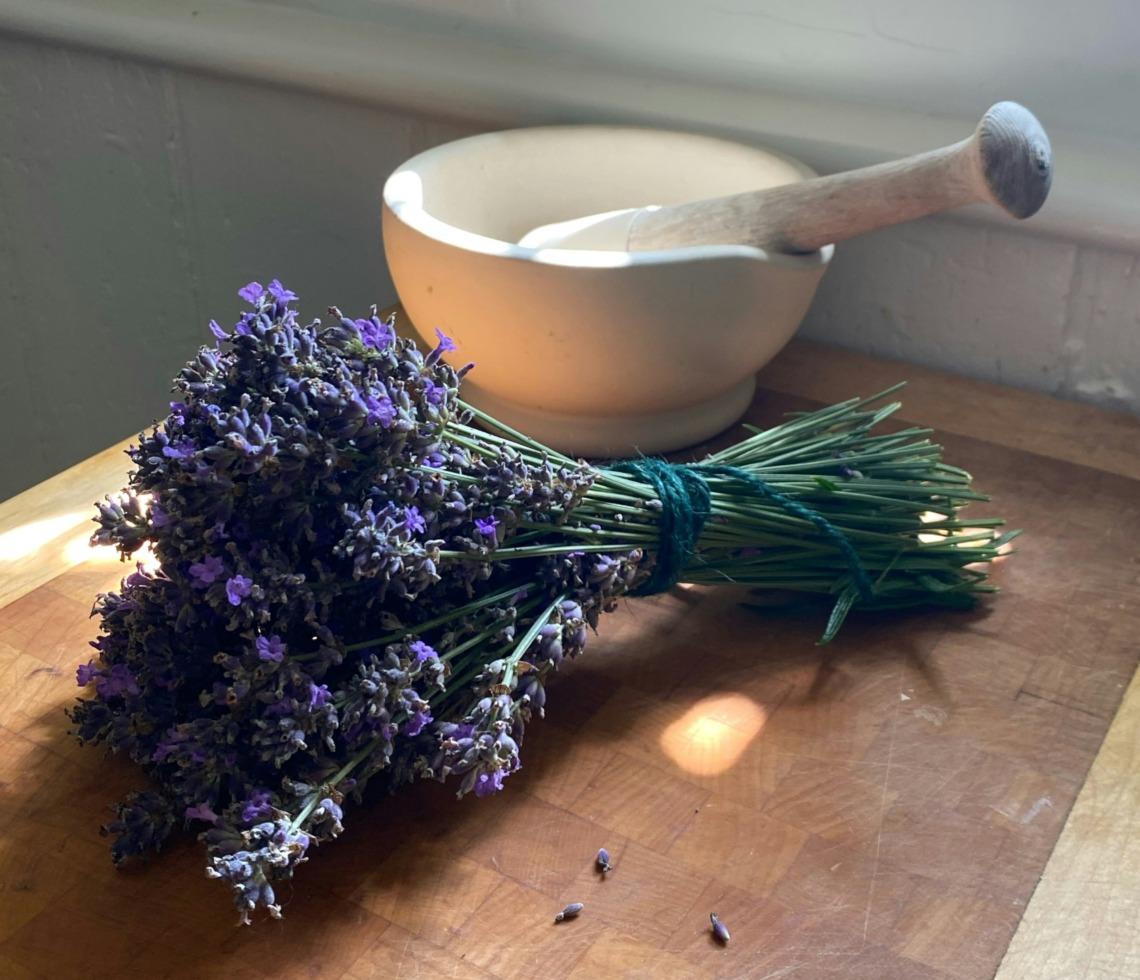
24

HomeComforts

Atthistimeofyearoutsidediningcomesintoitsownagain.Makemeals withfamilyandfriendsextraspecialbydressingyourtablewithburlap, pottedplants-perhapsthoseenjoyingtheirsummerbreakinthegardenandprettynapkinrings.
Eitherbindyournapkinswithalittlejutetwineandslipasprigoffoliage intothering,oruseacompletecircleoffreshfoliage(agreatwayofusing upthoseprunings!).
Creepersandclimbingplantshavenaturallypliantstemsthatcaneasilybe bentintoshape-tryivy,jasmine,clematisandevenhops. Jointhestem endsbybindingthemwithflorist’swireandlaythenapkinsjoinsidedown.
25
Sonnet18

ShallIcomparetheetoasummer’sday? Thouartmorelovelyandmoretemperate: RoughwindsdoshakethedarlingbudsofMay, Andsummer’sleasehathalltooshortadate.
Sometimetoohottheeyeofheavenshines, Andoftenishisgoldcomplexiondimm’d Andeveryfairfromfairsometimedeclines, Bychance,ornature’schangingcourseuntrimm’d.
Butthyeternalsummershallnotfade, Norlosepossessionofthatfairthouow’st; NorshallDeathbragthouwand’restinhisshade, Whenineternallinestotimethougrow’st.
Solongasmencanbreathe,oreyescansee, Solonglivesthis,andthisgiveslifetothee.
William Shakespeare, 1609
26

TheRoyalSchoolofNeedleworkwasfoundedin1872witha missiontopreservetheartofhandembroidery.
Tomarkits150thanniversarytheRSNlaunchedtheRSN StitchBanktocontinuethismission.
TheRSNStitchBankaimstodigitallyconserveandshowcase thewidevarietyoftheworld’sembroiderystitchesandthe waysinwhichtheyhavebeenusedindifferentculturesand times.
TheRSNStitchBankisanongoingprojectandnewstitches areaddedregularly.TheRSNwillbeworkingwithpartners aroundtheworldtoincludestitchesfromdifferenttraditions.
Everyyearwelosehistorictextilesthroughwear,age,andthemoreaggressiveroutesofwar,neglectand destruction.
Weknowthatstitchesfromhistoryhavebeenlostbecausetheyfalloutofuse.Then,whenanolder embroideredpieceisdiscovered,curatorsandmuseumstaffcannotrecognisethestitches.Textilesandthe knowledgeofstitchesthroughouttheworldcontinuetobethreatenedbywarsandotherdisturbances,aswell aschangesinmanufacturingprocesses.
StitcherscanusetheRSNStitchBanktofindanewstitchtouseinaprojectandlearnhowtomakeitusing videos,writteninstructions,illustrationsandphotographsforeachstitch.Researchers,curators,historians andstudentscanusethesitetolearnabouttheuse,structureandhistoryofeachstitchinarangeof embroiderytechniquesandtoidentifyastitchonatextile.
Youcanbrowsethestitchwall
Youcanalsocreateyourownfolderandsavethestitchesyouaremostinterestedin. Itisallcompletelyfree andanamazingresourceforstitchers!
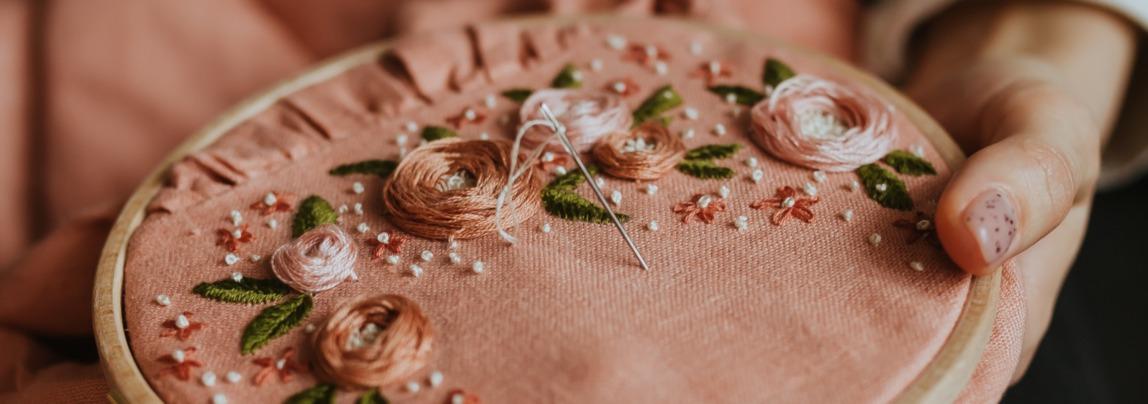
27
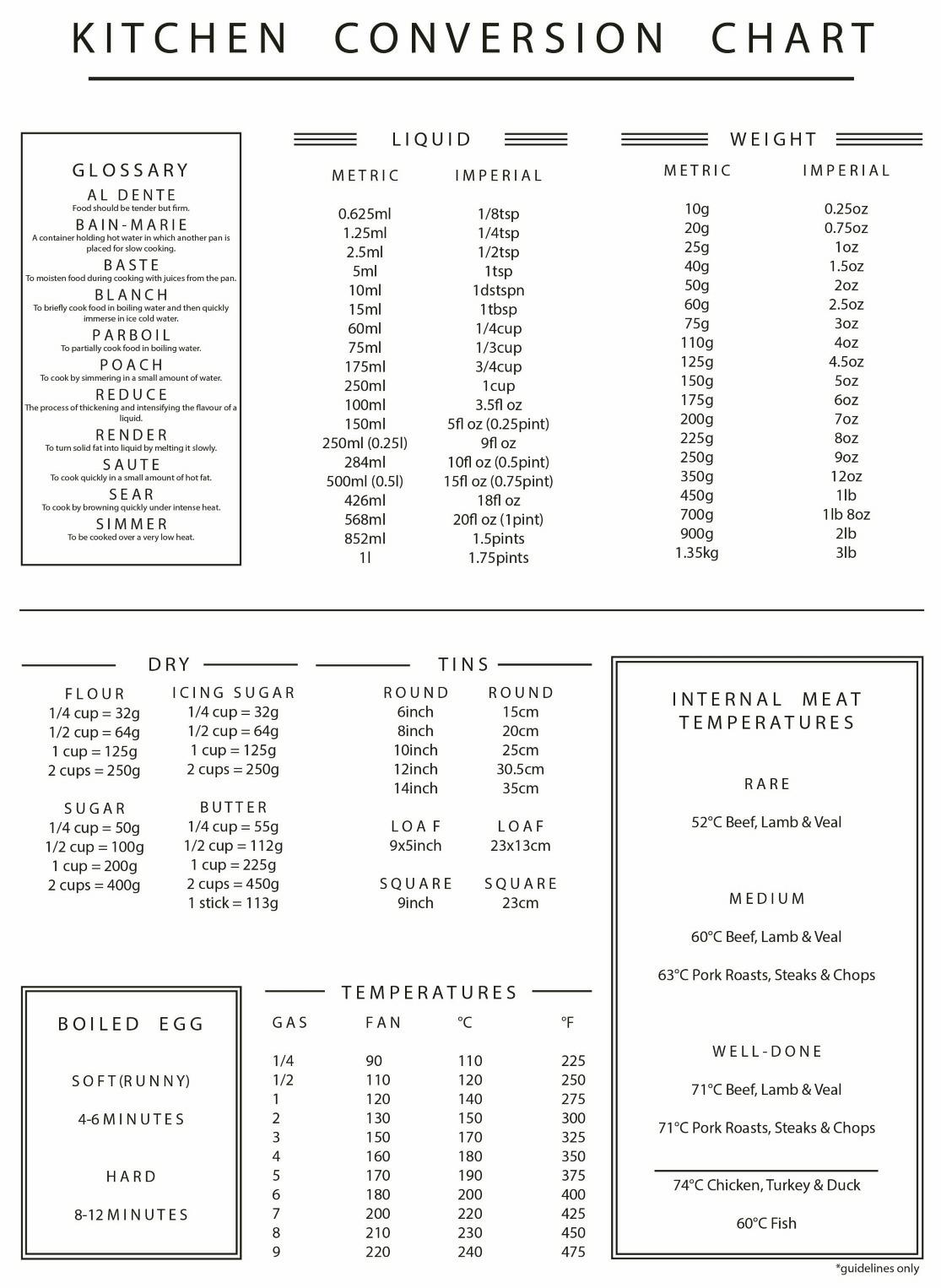
28

Templates

































